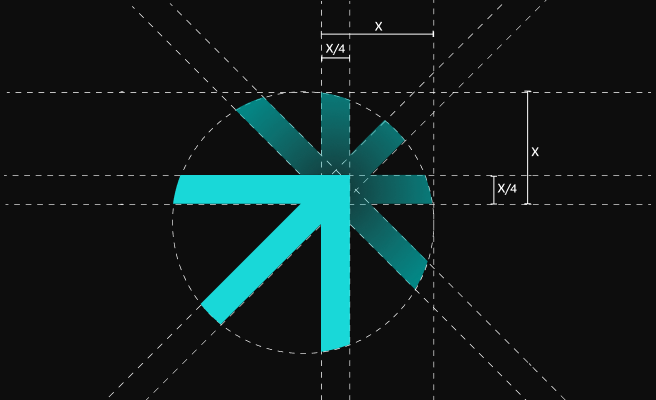Negative Space
<p>Negative space, also known as white space, refers to the empty or blank areas in a design. These areas are intentionally left vacant to balance the overall composition, create visual interest, and highlight the focal points. Negative space is crucial in product design because it helps organize content, improves readability, and enhances user experience by preventing clutter. For instance, in a digital product design for a climate tech company, effective use of negative space can make complex data dashboards more comprehensible, ensuring that critical information stands out.</p>
<p>The concept of negative space has been widely recognized and utilized in various design disciplines, including graphic design, web design, and product design. Historically, artists like M.C. Escher and designers from the Bauhaus movement have effectively harnessed negative space to create impactful and thought-provoking works. In modern design, it is a fundamental principle that contributes to the aesthetic and functional quality of a product.</p>
<h2>Importance of Negative Space in Product Design</h2>
<p>Negative space is not just an empty area; it serves several vital functions in product design:</p>
<ul>
<li><b>Enhances Readability:</b> By providing ample spacing between text and elements, negative space enhances the readability of content, making it easier for users to consume information.</li>
<li><b>Guides User Attention:</b> Negative space directs users' focus to key elements such as call-to-action buttons, images, or important messages, thereby improving the overall user experience.</li>
<li><b>Creates Aesthetic Appeal:</b> A well-balanced design with appropriate negative space appears more professional and aesthetically pleasing.</li>
<li><b>Improves Usability:</b> In interactive products, negative space can make buttons and links more tappable, especially on mobile devices.</li>
</ul>
<p>An example of effective use of negative space is seen in Google's homepage. The minimalistic design with ample white space puts the search bar at the center of attention, enhancing usability and user focus.</p>
<h3>Components of Negative Space</h3>
<p>Negative space can be categorized into two main types:</p>
<ul>
<li><b>Micro Negative Space:</b> This refers to the small gaps between elements such as letters, lines of text, or icons. Ensuring proper micro negative space is essential for readability and visual clarity.</li>
<li><b>Macro Negative Space:</b> This involves the larger areas surrounding major design elements. Macro negative space helps to create a balanced layout and directs the user's attention across the design.</li>
</ul>
<p>For instance, in a climate tech mobile app that tracks carbon emissions, micro negative space between data points ensures readability, while macro negative space around graphs and charts highlights the most critical information.</p>
<h3>Challenges in Utilizing Negative Space</h3>
<p>Despite its benefits, effectively incorporating negative space into a design can be challenging:</p>
<ul>
<li><b>Balancing Act:</b> Too much negative space can make a design appear sparse, while too little can lead to clutter. Finding the right balance is key.</li>
<li><b>Client Misunderstanding:</b> Clients may perceive negative space as wasted space, making it essential to educate them on its importance.</li>
<li><b>Consistent Application:</b> Maintaining consistent negative space across different screen sizes and devices requires careful planning and responsive design techniques.</li>
</ul>
<h3>Overcoming Challenges</h3>
<p>Designers can use several strategies to overcome these challenges:</p>
<ul>
<li><b>User-Centered Design:</b> Conduct user research to understand how different users interact with the design and adjust negative space accordingly.</li>
<li><b>Prototyping and Testing:</b> Create prototypes and conduct usability tests to gather feedback and refine the use of negative space.</li>
<li><b>Responsive Design Principles:</b> Implement responsive design principles to ensure that negative space is appropriately adjusted for various screen sizes.</li>
</ul>
<h2>Conclusion</h2>
<p>Negative space is a vital component of effective product design, contributing to readability, user focus, and overall aesthetic appeal. By strategically incorporating negative space, designers can create more intuitive and user-friendly products. For climate tech companies, leveraging negative space in their digital products can enhance the delivery of complex information, ensuring that critical data is easily accessible and comprehensible. To learn more about improving your product design strategies, consider exploring resources like <span style="color: #2896FF; text-decoration: underline;"><a href="https://www.nngroup.com/" target="_blank">Nielsen Norman Group</a></span> or <span style="color: #2896FF; text-decoration: underline;"><a href="https://www.smashingmagazine.com/" target="_blank">Smashing Magazine</a></span>.</p> <p>If you’re looking for inspiration to elevate customer and user experience, view our work with <a href="https://www.whatifdesign.co/work/vested-futures-ux-design-and-product-strategy" style="color:#2896FF; text-decoration:underline;">Vested Futures</a>, a web platform for climate and ESG vendors and service-provider ecosystem.<p>Ready to get started? <a href="https://cal.com/akhilak/what-if-design?duration=30" style="color:#2896FF; text-decoration:underline;">Book a 1:1 consultation call</a> with us today.</p></p>

Let's scale your impact with great design.
Free consultation, no sales pitch
Thank you! Your submission has been received!
Oops! Something went wrong while submitting the form.
Let’s talk
Nothing great is built alone.
Let’s connect about your vision, our work and how we can collaborate.
Get in touch

